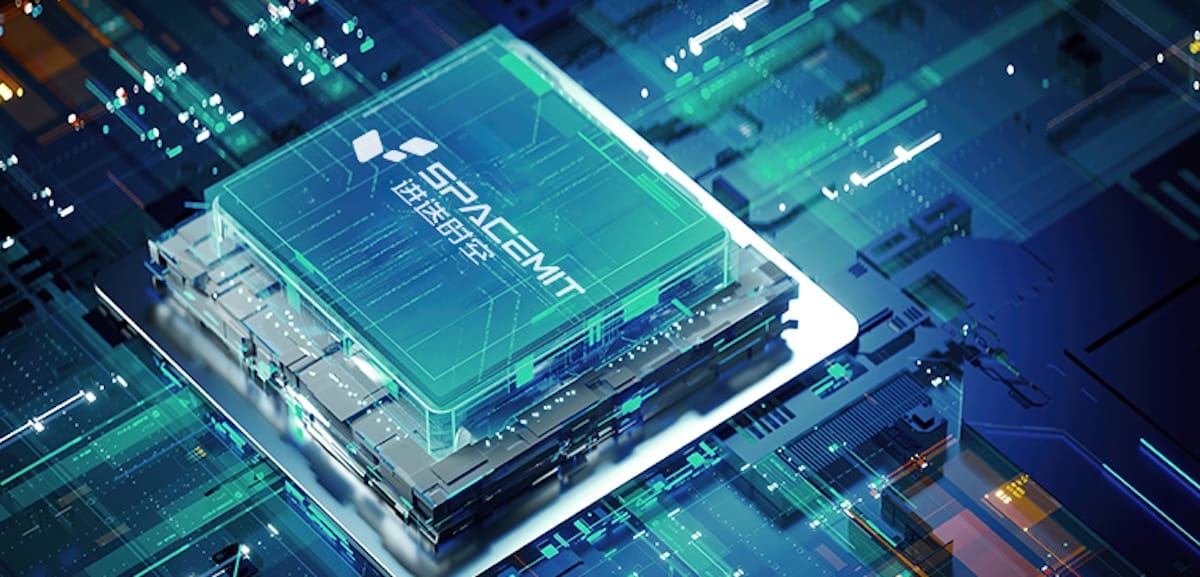China continues its strategy to reduce dependence on Western technology and strengthen its self-sufficiency in the tech sector. In this context, the company SpacemiT has announced the VitalStone V100, a 64-core CPU based on the RISC-V architecture, manufactured using a 12 nm process. This processor, specifically designed for servers, aims to replace older models from Intel and AMD, thereby reinforcing cybersecurity and reducing vulnerability to international restrictions.
VitalStone V100: Key Features
The VitalStone V100 is the result of China’s efforts to develop an independent technological infrastructure. Based on the RISC-V RVA23 specification, this processor is manufactured with 12 nm technology, ensuring large-scale production without the limitations associated with more advanced processes.
Among its key features are:
- X100 cores: Derived from the OpenC910 project, these cores reach a frequency of 2.5 GHz in Boost mode.
- Compatibility with BRS (Boot and Runtime Services): This facilitates the processor’s deployment in servers without the need for additional adjustments in operating systems.
- 256-bit vector processing: A functionality that enhances performance in specific applications such as artificial intelligence.
- Int8 data capability: Although this is a low precision, it is ideal for certain AI and machine learning tasks.
Performance and Comparison
According to SpacemiT, the VitalStone V100 achieves a performance of approximately 22.5 points in SPEC INT2006 at 2.5 GHz, similar to Intel processors from a decade ago manufactured at 14 nm. While its performance does not rival the latest generations of Western CPUs, this advancement is significant for China, reflecting steady progress in terms of efficiency and design.
Moreover, in terms of security, SpacemiT claims that the VitalStone V100 is immune to known vulnerabilities like Spectre and Meltdown, which severely affected AMD and Intel processors. This approach strengthens the commitment to a safer and more reliable infrastructure.

A Challenge to U.S. Technological Hegemony
The development of the VitalStone V100 aims not only to bridge the technological gap with the West but also to minimize the impact of potential future sanctions. The United States has already indicated its interest in limiting the use of RISC-V, aware that this open architecture is key to China’s advances in hardware. However, the open nature of RISC-V makes imposing effective restrictions difficult, allowing companies like SpacemiT to continue developing competitive solutions.
What Does This Mean for the Server Market?
While the VitalStone V100 is unlikely to reach the international market, it is almost certain to be implemented in strategic projects within China, especially in key government and corporate sectors. This processor will replace nearly a decade-old Intel and AMD hardware, providing greater control and national security.
For now, SpacemiT has not disclosed details about pricing or availability, but all indications suggest that this processor will be exclusive to the Chinese market, thus reinforcing the country’s strategy to prioritize technological sovereignty over external restrictions.
Conclusion
The VitalStone V100 is a clear example of China’s efforts to advance its technological independence. While it is still far from directly competing with the latest-generation processors from Intel and AMD, this development demonstrates significant progress in performance, security, and self-sufficiency. In a context of increasing geopolitical tensions, such initiatives bolster China’s position in the global technology race.
SpacemiT X100™ Core Features Table
| Features | Description |
|---|---|
| Architecture | 64-bit RISC-V RVA23, compatible with the RISC-V IME extension for AI computing. |
| Clock Speed | Up to 2.5 GHz with a 12 nm fabrication process. |
| Performance | 9.0 SPECInt2006/GHz and 7.7 CoreMarks/MHz using the SpacemiT LLVM compiler. |
| Cores and Clusters | Supports up to 64 cores distributed across multiple clusters, with intra-cluster and inter-cluster consistency. |
| Microarchitecture | Out-of-order execution with 4 stages and compatibility with multi-core and multi-cluster processing. |
| Vectorization | Complies with the RISC-V Vector 1.0 standard and supports RISC-V Vector Crypto extensions. |
| Virtualization Support | Compatible with the RISC-V Hypervisor extension and the AIA specification. Enables the formation of complete virtualization systems with IOMMU. |
| Security | Proven resistance against attacks like Meltdown and Spectre. Includes RAS (Reliability, Availability, Serviceability) for integrity reporting. |
| Server Features | Offers standard RISC-V RAS features, capability for secure computing environments, and compatibility with efficient instruction tracking. |
| Development Support | Includes a software development kit (SDK), RTL simulation platform, FPGA bitfile, and detailed documentation. |
| Applications | Designed for servers, autonomous driving, main control units for cloud AI, and other high-performance applications. |
Overview
The SpacemiT X100™ Core is a high-performance processor based on the RISC-V RVA23 architecture, aimed at scenarios demanding high computational capacity, such as servers and AI applications. With a focus on resilience, advanced virtualization, and vector capabilities, the X100™ Core is designed to provide a comprehensive and secure solution for mission-critical environments.
Source: Spacemit

